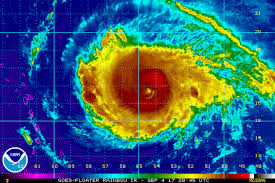How does Saffir-Simpson Hurricane Wind Scale (SSHWS) classify hurricanes?« Back to Questions List
|
The Saffir–Simpson hurricane wind scale (SSHWS) is a method adopted for classification of hurricanes based on their intensity. The scale was earlier known as Saffir–Simpson hurricane scale (SSHS). The Saffir-Simpson hurricane wind scale is applied to indicate the strength of hurricanes that occur to the east of International Date Line ie the hurricanes that originate in the Atlantic and northern Pacific Oceans. Other areas use their own names and classification standards to describe tropical storms. The initial scale was proposed by Herbert Saffir, a structural engineer to predict the impact of a hurricane. The inspiration was the Ritcher scale used to measure the severity of earthquakes. He proposed five categories in a 1-5 scale based on the expected damage that wind speed could do to structures. The proposal was given to U.S. National Hurricane Center (NHC). Robert Simpson, then Director of NHC modified the scale by adding effects of storm surge and flooding and they began to use it in 1971. NHC in 2009 modified the scale by removing impacts of pressure and storm surge. Thus it became a pure wind scale with the name Saffir–Simpson Hurricane Wind Scale (SSHWS) and became operational on May 15,2010. It was observed that a Category 2 hurricane that hits a major city could do more damages than a category 5 hurricane that hits a rural area. Hence the revision was done to rectify the scientifically inaccurate information. The scale is used for storms that are more intense than tropical storms and have chances to become hurricanes. To be classified as a hurricane category 1 in the Saffir–Simpson hurricane wind scale (SSHWS), the wind needs to have sustained winds of minimum 74 mph ( 119 km/h). Storms with winds having more than 156 mph ( 251 km/h) comes under category 5. The scale predicts the possible wind speed on landfall. It does not mention rainfall or storm surge or wideness of storm. The table below shows the categories 1-5 based on Saffir–Simpson hurricane wind scale.
What is the role of Doppler radar in weather forecasting?El Nino: The reasons behind |

